Important KPIs to Track in A Call Center
In this article, you will learn about Call Center KPIs guide to help managers track metrics for efficiency and customer satisfaction. Learn how to optimize performance.
5 min read
Call Center KPIs are critical for ensuring the efficiency and effectiveness of operations in a call center. These key performance indicators inform managers about various aspects of their call center’s performance and help identify areas for improvement. Given the high competition and the necessity to maintain excellent customer service, tracking the right KPIs has never been more crucial for call centers.
In this blog post, we will explore the most important KPIs that every call center should monitor, highlighting their significance and how they impact the overall performance of your operations. With actionable tips and insights, we aim to equip you with the knowledge to optimize your call center’s performance, ultimately leading to happier customers and a more productive team.
Each KPI plays a unique role in evaluating different dimensions of call center operations. From monitoring customer satisfaction to assessing agent performance, KPIs provide a comprehensive picture of how well a call center is functioning. They allow managers to make data-driven decisions, streamline processes, and enhance both customer and employee experiences. Studies have shown that companies utilizing performance metrics effectively can increase their productivity and customer satisfaction levels significantly.
For instance, according to a report by the Aberdeen Group, organizations that use agent performance management tools can achieve a 26% increase in customer retention rates compared to those that do not. This highlights the direct impact of well-monitored KPIs on business outcomes. So, if you’re an HR manager, CXO, or operations manager in a call center, understanding and tracking these KPIs can make a substantial difference in your business strategy and success.
In the following sections, we will delve into the essential KPIs every call center should track. We’ll explain what each KPI is, why it’s important, and offer some practical tips on how to measure and improve it within your organization.
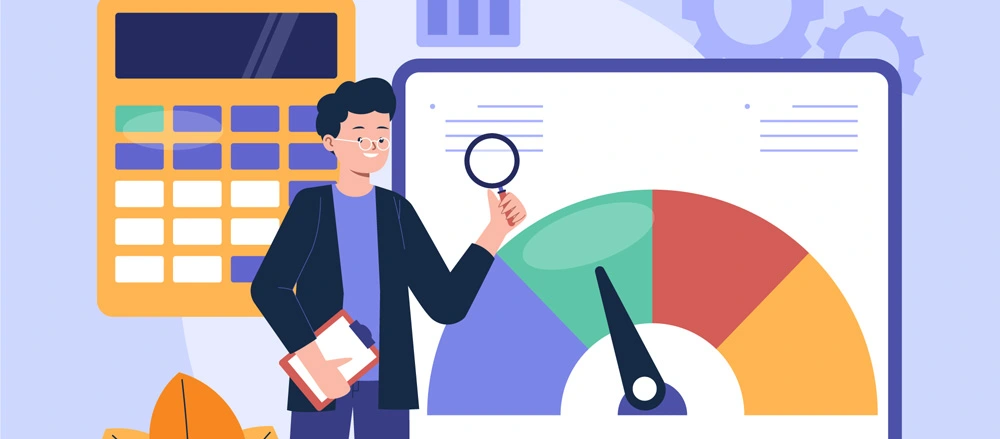
1. Average Handle Time (AHT)

Average Handle Time (AHT) is one of the most important KPIs in a call center. It measures the average duration from the start of the customer interaction to its conclusion, including any hold time and after-call work. A lower AHT typically indicates that agents are resolving issues quickly and efficiently.
Significance: AHT is crucial because it impacts both customer satisfaction and operational efficiency. Customers prefer quick resolutions, and a lower AHT means you can handle more calls with the same number of agents, thus optimizing resource use.
Pro Tip
Use call recording and monitoring tools to analyze high AHT cases. Identifying the root causes can help in training agents more effectively and tweaking your processes to reduce handle time.
2. First Call Resolution (FCR)
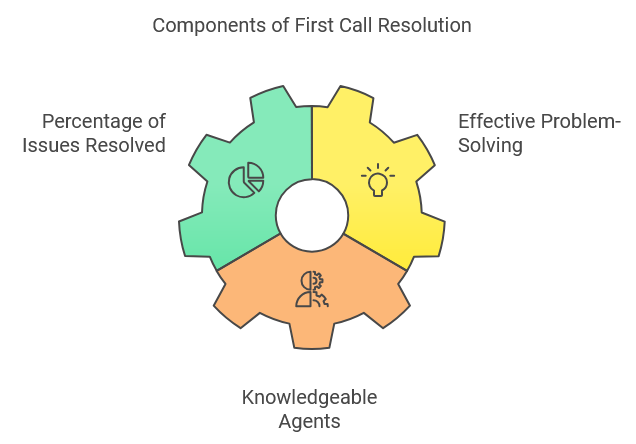
First Call Resolution (FCR) is a KPI that tracks the percentage of customer issues resolved on their first call. High FCR rates are indicative of effective problem-solving and knowledgeable agents.
Significance: FCR is directly linked to customer satisfaction. According to a study by SQM Group, for every 1% improvement in FCR, there is a corresponding 1% improvement in customer satisfaction. A high FCR means fewer repeat calls, which also reduces operational costs
Pro Tip
Regularly update your knowledge base and provide continuous training to your agents. Well-informed agents are more likely to resolve issues on the first call.
3. Customer Satisfaction Score (CSAT)
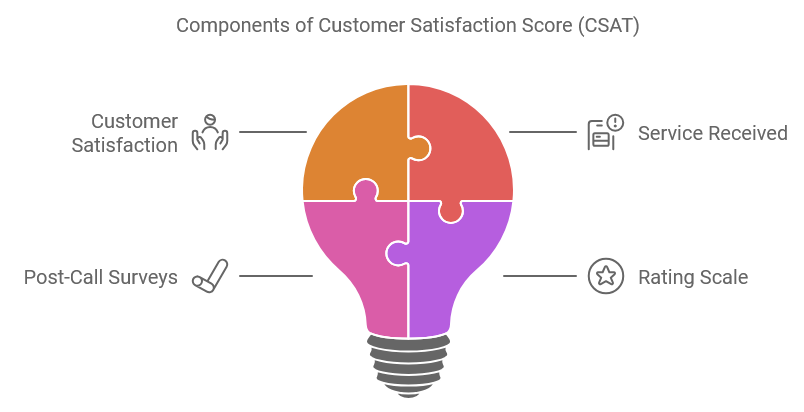
Customer Satisfaction Score (CSAT) measures customer satisfaction with the service they received. This is usually done through post-call surveys where customers rate their experience on a scale (e.g., 1-5).
Significance: CSAT is a direct indicator of how happy your customers are with your service. High CSAT scores generally lead to higher customer retention and loyalty. According to McKinsey, companies that prioritize customer experience see 1.5 times higher employee engagement and a 40% lower churn rate.
Pro Tip
Send follow-up surveys via SMS or email to encourage more responses. Use the feedback to identify areas for improvement.
4. Net Promoter Score (NPS)

Net Promoter Score (NPS) assesses customer loyalty by asking a single question: “How likely are you to recommend our service to others?” Customers rate their likelihood on a scale from 0 to 10.
Significance: NPS is a powerful indicator of customer satisfaction and potential word-of-mouth referrals. A high NPS suggests that customers are pleased with your service and are likely to promote it. According to Bain & Company, increasing NPS by 5 points can lead to a 12% increase in revenue growth.
Pro Tip
Segment your NPS data to identify promoters, passives, and detractors. Focus on converting passives and detractors into promoters by addressing their concerns and improving their experience.
5. Service Level
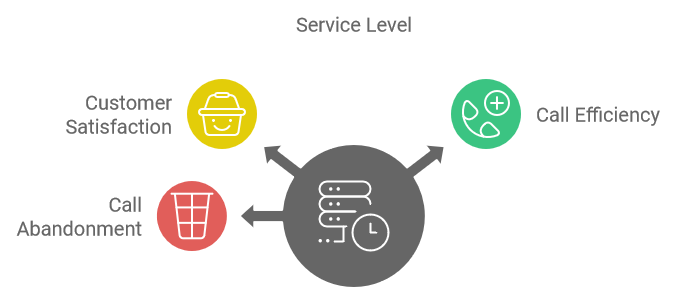
Service Level measures the percentage of calls answered within a predetermined timeframe (e.g., 80% of calls answered within 20 seconds). It reflects the efficiency and responsiveness of your call center.
Significance: Maintaining a high service level ensures that customers are not kept waiting, which directly impacts their satisfaction. High service levels can also reduce call abandonment rates and improve overall operational efficiency. According to a study by Call Centre Helper, 80% of organizations believe that service levels are a key factor in determining customer satisfaction.
Pro Tip
Use workforce management tools to forecast call volumes and schedule agents accordingly. This can help in maintaining optimal service levels even during peak times.
6. Call Abandonment Rate
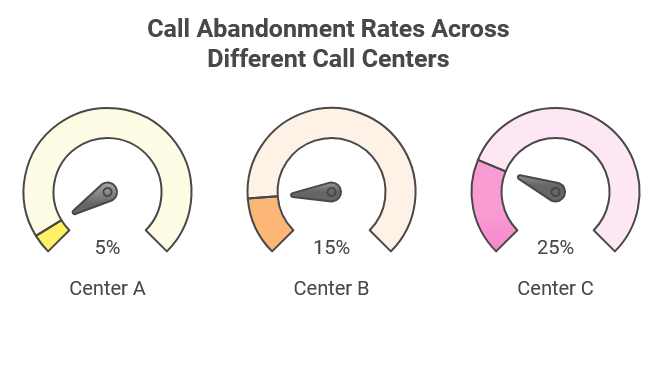
Call Abandonment Rate is the percentage of callers who hang up before reaching an agent. This KPI reflects customer frustration and the inefficiency of your call center.
Significance: High abandonment rates indicate that customers are dissatisfied with long waiting times. Reducing the abandonment rate can enhance customer experience and lower the chances of losing potential business. According to Contact Babel’s U.S. Contact Center Decision Maker’s Guide, a 1% reduction in abandonment rate can result in a 5% increase in revenues.
Pro Tip
Implement a callback option for customers waiting in the queue. This will reduce abandonment rates and improve customer satisfaction.
7. Occupancy Rate
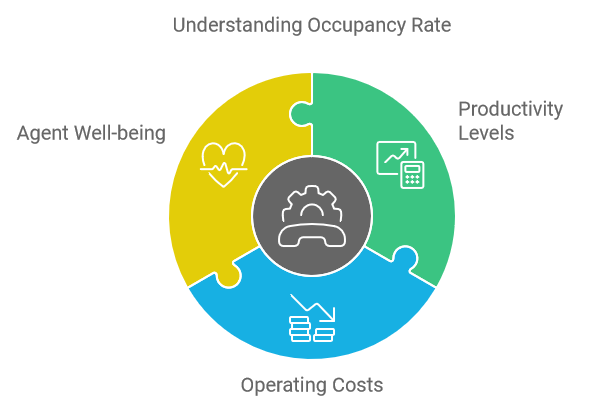
Occupancy Rate measures the percentage of time agents are actively engaged in handling calls versus waiting for the next call. This KPI helps in understanding the productivity levels of your agents.
Significance: High occupancy rates indicate that your agents are efficiently utilized, which can reduce operating costs. However, overly high occupancy rates can lead to agent burnout and reduced performance over time.
Pro Tip
Continuously monitor occupancy rates and ensure they are within an optimal range (generally between 75% to 85%). Use real-time dashboards for accurate tracking.
8. Agent Turnover Rate
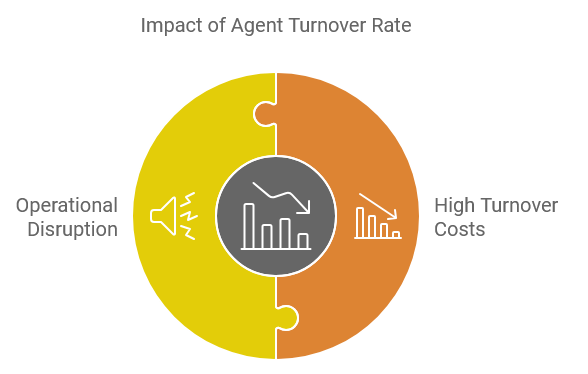
Agent Turnover Rate measures the percentage of agents who leave the organization within a certain period. High turnover rates are costly and disruptive to operations.
Significance: Reducing agent turnover is crucial for maintaining high service quality and keeping training costs low. According to Customer Contact Strategies, replacing a call center agent can cost up to $15,000. Therefore, lowering turnover rates can result in significant cost savings.
Pro Tip
Foster a positive work environment and provide career development opportunities to retain your agents. Regular feedback sessions and recognition programs can also help reduce turnover.
9. Average Speed of Answer (ASA)
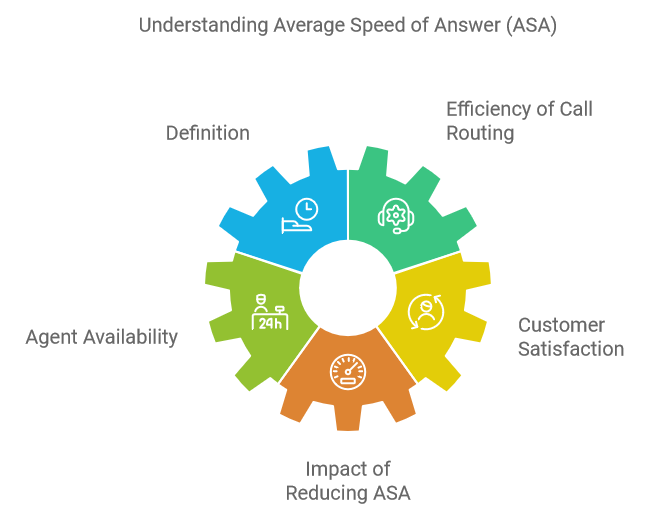
Average Speed of Answer (ASA) measures the average time it takes for a call to be answered by an agent. This KPI reflects the efficiency of your call routing and agent availability.
Significance: Lower ASA times contribute to higher customer satisfaction as they indicate quick response from your call center. According to Talkdesk, reducing ASA by just a few seconds can significantly improve the customer experience.
Pro Tip
Use Interactive Voice Response (IVR) systems and automated call distribution to manage incoming calls more effectively and reduce ASA.
10. Call Quality
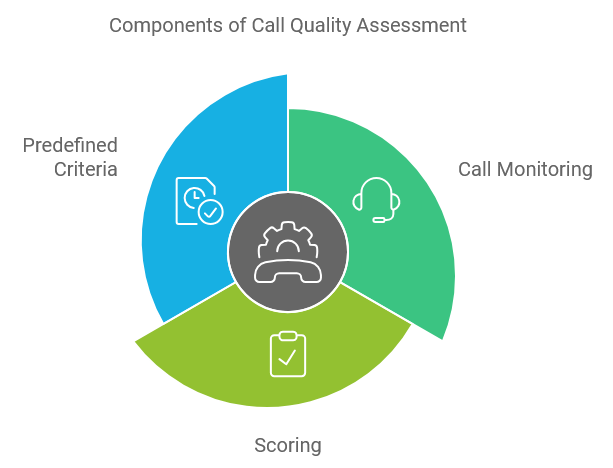
Call Quality assesses the overall performance of call center agents during interactions with customers. This is usually done through call monitoring and scoring based on predefined criteria.
Significance: High call quality ensures that agents are providing accurate and helpful information to customers. This can lead to higher customer satisfaction and reduce the need for repeat calls.
Pro Tip
Implement a robust quality assurance program that includes regular call reviews and feedback sessions with agents. Use these sessions to identify areas for improvement and provide targeted training.
Conclusion
Tracking the right Call Center KPIs is essential for managing and optimizing your call center’s performance. Each KPI offers unique insights into different aspects of your operations and helps in making informed decisions to improve efficiency and customer satisfaction.
By understanding and monitoring these KPIs—AHT, FCR, CSAT, NPS, Service Level, Call Abandonment Rate, Occupancy Rate, Agent Turnover Rate, ASA, and Call Quality—you can effectively manage your resources, enhance customer experience, and achieve your business goals.
Remember, the key to successful KPI management is not just collecting data but also analyzing it and taking action based on the insights you gain. Regularly review your KPIs, involve your team in the process, and continuously strive for improvement. By doing so, you’ll create a more efficient, productive, and customer-centric call center that stands out in a competitive market.
Implementing these best practices and staying informed about industry trends will position your call center for long-term success. So, start tracking these KPIs today and see how they can transform your call center operations.
Pro Tip
Regularly review industry benchmarks to compare your KPI performance. This will help you stay competitive and set realistic targets for improvement.
Start transformation of your call center today!
Say hello to productivity, accuracy, and profitable growth. Streamline your call center operations with HiveDesk.

